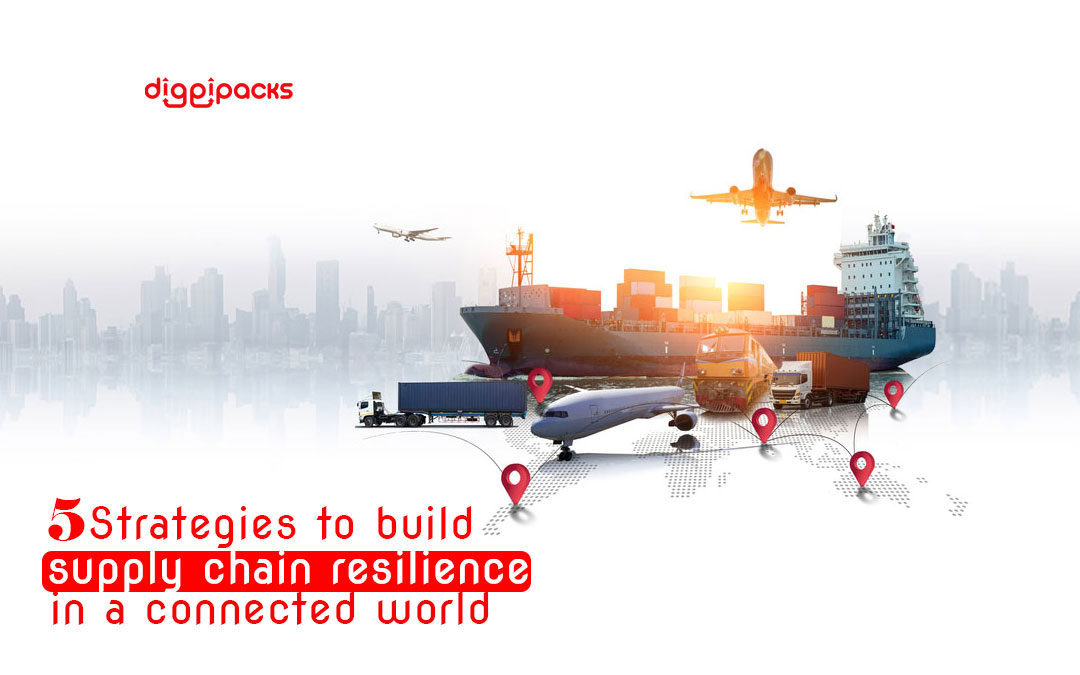
provide chain resilience is no longer a nice-to-have, but a requirement for businesses operating in today’s volatile global environment. Disruptions, from natural disasters to geopolitical tensions, can quickly cripple provide chains, leading to substantial financial losses and reputational damage. This article delves deep into the critical idea of provide chain resilience, providing a thorough guide to building a more robust and adaptable provide chain. We’ll explore various strategies to mitigate risks, enhance visibility, and create a more agile and sustainable network. We’ll discuss determineing vulnerabilities, improving supplier relationships, and developing contingency plans. The article will be structured in 5 sections, starting with a clear meaning, moving into key strategies, followed by detailed examination and practical examples, culminating in the conclusion, FAQ, and key takeaways.
Defining provide Chain Resilience
Understanding the idea
provide chain resilience is the ability of a provide chain to withstand and recover from disruptions. It’s not just about surviving a crisis, but about adapting and thriving in a constantly evolving environment. This resilience hinges on the ability to anticipate potential risks, understand their impact, and develop strategies to mitigate their effect. A resilient provide chain is one that can maintain or quickly return to its normal operational state while minimizing the impact of disruptions.
The Importance of Resilience
In today’s interconnected global economy, provide chains are highly complex and vulnerable to numerous factors. Natural disasters, geopolitical instability, pandemics, and even unexpected supplier issues can lead to significant disruptions. Without resilience, these disruptions can cripple a company’s ability to deliver products or services, impacting profitability and potentially leading to severe long-term consequences. Building resilience is paramount for maintaining operational efficiency and minimizing the fallout from unforeseen events.
determineing Weak Points
A critical facet of resilience is determineing weaknesses within the provide chain. Analyzing the network’s dependencies, evaluating the geographic concentration of suppliers, and assessing the ability to quickly respond to disruptions are all vital components of this process. By highlighting these vulnerabilities, businesses can proactively develop strategies to strengthen specific areas. This process of risk assessment is an iterative process.
Related Post : Data Privacy Concerns: Protecting Consumer Information in Business Industries
Building Resilient Supplier Relationships
Diversifying Supplier Base
One of the most effective strategies for building provide chain resilience is diversifying the supplier base. Instead of relying on a single source for critical components, businesses can leverage multiple suppliers to reduce dependence and mitigate risk. This diversification can be achieved by strategically selecting suppliers located in varied regions, ensuring a spread of risks. By having multiple vendors for the same components, companies can maintain their operational capabilities.
Implementing Risk Management Strategies
Proactive Risk Assessment
Proactive risk assessment is essential to anticipate and prepare for potential disruptions. determineing potential threats, evaluating their likelihood and impact, and creating mitigation plans are all critical steps. This process often involves analyzing historical data, conducting scenario planning, and gathering input from various stakeholders. By focusing on the possibilities of failures, companies can prepare contingency plans.
Utilizing Technology for Visibility
Enhancing Visibility
Technology plays a vital function in building a more resilient provide chain. Real-time visibility into inventory levels, transportation status, and supplier performance can help companies anticipate and react swiftly to disruptions. Leveraging advanced technologies such as GPS tracking, cloud-based inventory management, and analytics dashboards allows companies to respond to challenges quickly and efficiently.
Fostering Adaptability and Agility
Adapting to Changes
provide chains must be designed with adaptability and agility in mind. Companies need to be flexible enough to adjust to changes in demand, provide, and industry conditions. Flexibility in production lines, inventory management, and logistics can make the difference between weathering disruptions and being overwhelmed by them. Companies must invest in systems that allow for a rapid change of course to adapt to new industry demands.
Measuring and Improving provide Chain Resilience
Defining Metrics
Defining metrics to measure resilience is crucial to understand the efficacy of implemented strategies. Key metrics may include supplier performance ratings, inventory turnover rates, delivery lead times, and the speed of response to disruptions. Tracking these metrics allows for continuous improvement and adaptation to new challenges.
Case Studies of provide Chain Resilience
achievement Stories
Numerous companies have demonstrated achievement in building resilient provide chains. Analyzing their strategies can offer valuable insights. Examples could include focusing on diversifying production locations or developing alternative transportation routes to avoid geopolitical hotspots.
Importance of Collaboration and Communication
Strengthening Relationships
Strong relationships with suppliers, customers, and stakeholders are crucial for achievementful provide chain resilience. Collaboration and open communication are vital to coordinate responses to disruptions and maintain trust throughout the network.
Importance of Investment and Employee Training
Investing in Technology
Investing in technology, analytics, and talent development will help to enhance the visibility of the provide chain and boost resilience, creating a more adaptable and efficient network. Investing in this area ensures your team has the skills and tools to adapt to potential provide chain challenges effectively. Education and training programs will support effective decision making to support the overall objective of increasing resilience, which will have a significant impact on the company’s overall achievement.
In conclusion, building provide chain resilience is crucial for businesses to navigate disruptions and maintain profitability in today’s dynamic industry. By implementing the strategies outlined in this article, companies can minimize vulnerabilities, enhance adaptability, and emerge stronger from unforeseen events. Implementing a robust risk management system, fostering strong supplier relationships, and diversifying provide sources are key to building resilience. Continuously monitor the industry, invest in technology, and educate employees to stay ahead of evolving provide chain challenges. Ready to enhance your provide chain’s resilience? Contact us today for a consultation.